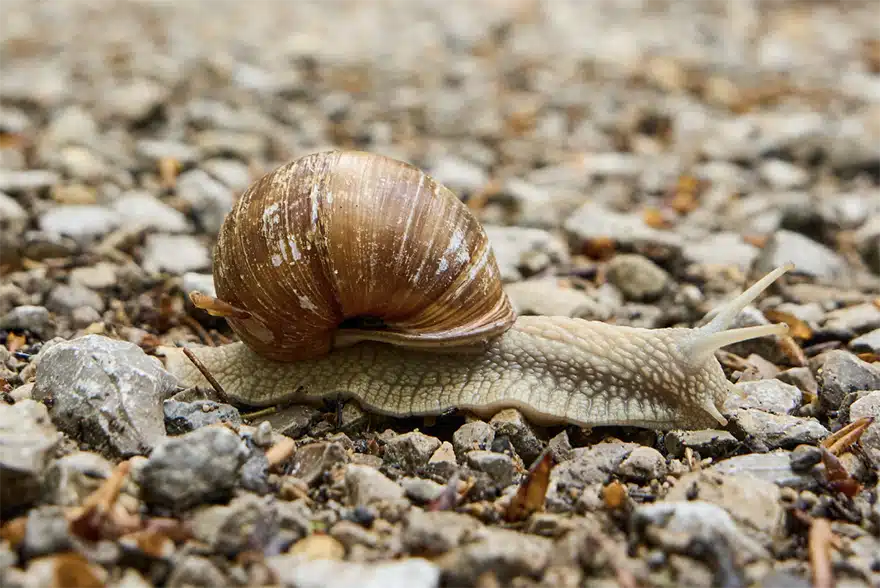A home for snails
Snails are practically everywhere. You have probably seen some in your garden or on the surface of a wall, defying gravity.
Snails are mollusks belonging to the class Gastropoda, whose members, slugs and snails make up 80 percent of all mollusks. The gastropods live throughout the world, from the Arctic and Antarctic oceans to the equatorial regions. Also, some species have adaptations to survive in the water and some others on land.
For their part, land snails are among the most widely distributed invertebrates around the world. They can be found on five continents and even in the sub-Antarctic region, where temperatures are very low. Only in North America exist more than 500 native species, and these coexist with other species introduced or that came from other places.
Assorted habitats
As we said, snails are present in most of the world, so it is not a surprise to discover that they dwell in diverse habitats. Some of them are comfortable in the desert while others live in ditches and cooler climates. These include mountain areas and even marshes.
Some people assume that snails do not live in the desert, but that isn’t true. The terrestrial gastropods are the only mollusks that have adapted to all the habitats of the Earth. They dwell in areas of high altitude, mountainous regions, hot and cold places.
Land snails live and perform their vital functions on the ground and not in the sea or bodies of fresh water. However, sometimes the line between aquatic and terrestrial species is thin since some prefer humid sites, and some others are almost amphibian.
They can survive in both natural and urban areas, or uninhabited environments. Common places that land snails inhabit are gardens, fields, agricultural areas, river banks or streams, suburbs, swamps, cities, jungles, and forests. Often, house gardens are home to many snails, and as they are easy to maintain, some people keep them as if they were farm animals, although this activity is typically done to use snails as food.
Thanks to the fluid they secrete, snails can move on all types of surfaces, so it is common to see them on walls, ceilings, rocks, plant leaves, mosses and cracks in any area. Many prefer to stay close to the rocks, ditches, and plants to have a place to protect themselves from their natural predators.
Super Snails
While it is true that most prefer humid sites, some snails can survive the harsh conditions of the deserts. Among these species are the little known Sphincterochila boissieri and Xerocrassa seetzeni. The former lives in the deserts of Egypt and Israel, and the latter is distributed from Syria to Saudi Arabia in the Negev desert, an area uninhabitable to people and many animals, but not for them.
The species Notodiscus hookeri dwells in the sub-Antarctic region, specifically in the islands and archipelagos of the Atlantic Ocean: The Kerguelen Islands, Crozet Islands, Prince Edward Islands, Heard and McDonald Islands and the South Georgia group.
Some birds such as the Great Tit (Parus major) carries snails in its plumage, a fact that suggests that these small gastropods can be transported from habitat to habitat in an unintentional way.
It is clear that snails are abundant, but some are at risk of disappearing from some areas, and others are taken out of their natural habitat for practical purposes. In some cases, it has been counterproductive, as with the Giant African Snail (Achatina fulica), introduced to many areas of the world and now considered one of the most dangerous invasive species due to its habit of consuming crops.
The snails in your backyard are very resilient animals, even if they do not look so.
Sources:
http://www.iucnredlist.org/
https://en.wikipedia.org/wiki/Snail#Types_of_snails_by_habitat
http://animaldiversity.org/
BioExpedition Publishing © 2017.







